ActiveRecord is the default ORM used in Rails to map database tables to Ruby classes. It provides an active record pattern implementation that allows models to be queried and persisted to a database. ActiveRecord encourages a model-driven development style with non-anemic models and associations that add methods to related classes for easy data access and management. While it abstracts some SQL details, ActiveRecord exposes SQL as needed and requires SQL knowledge to handle more complex queries.

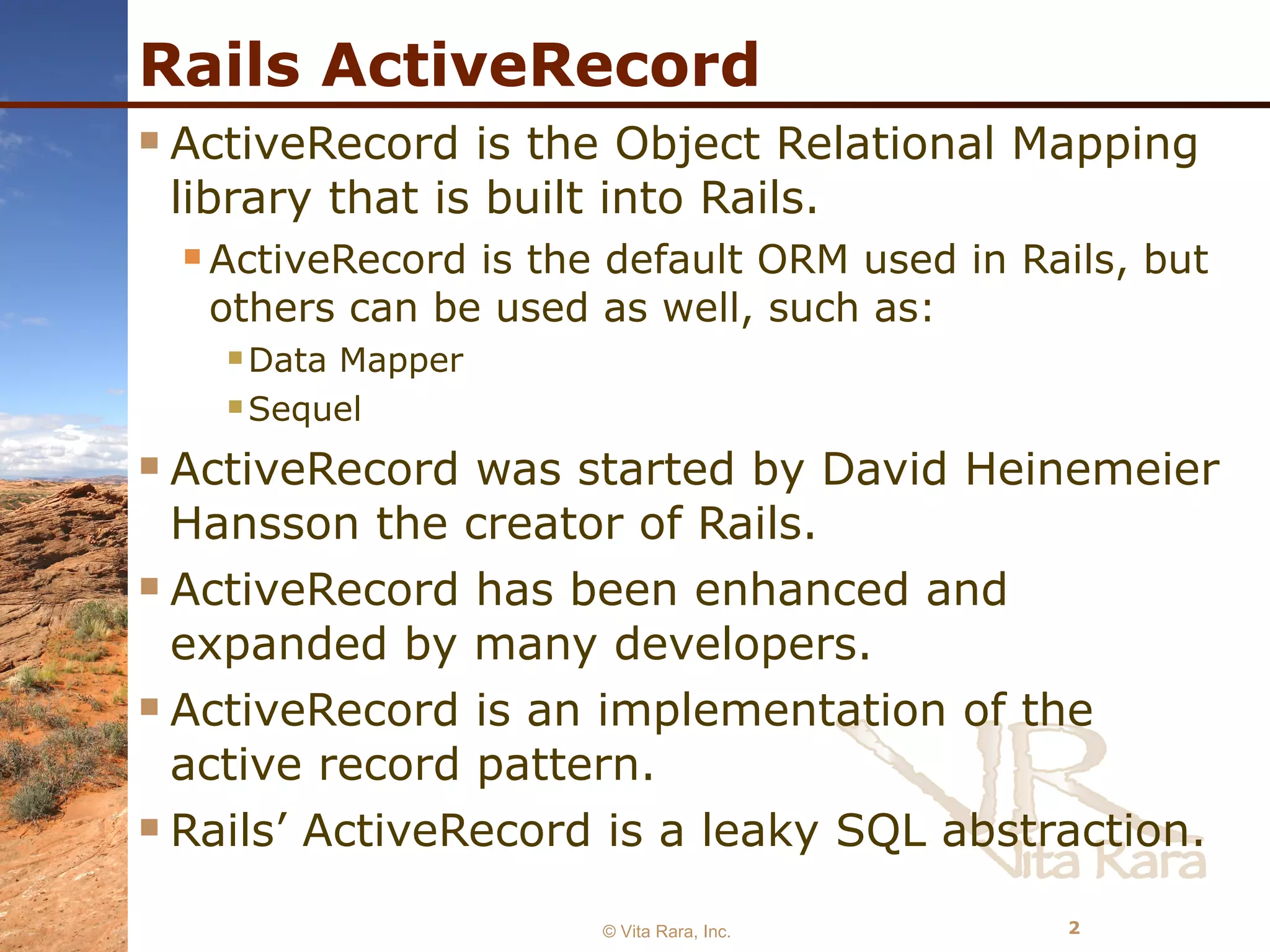
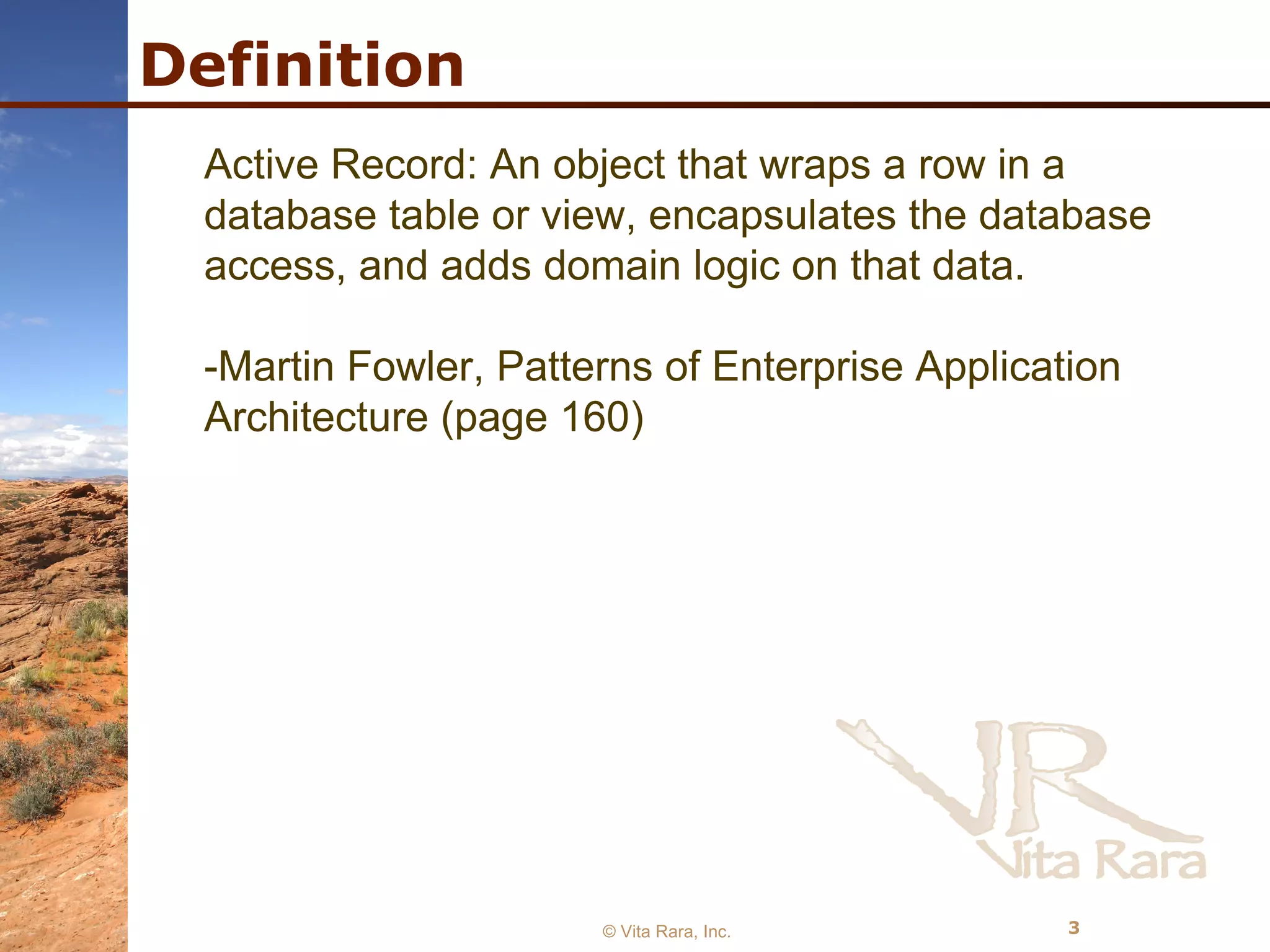
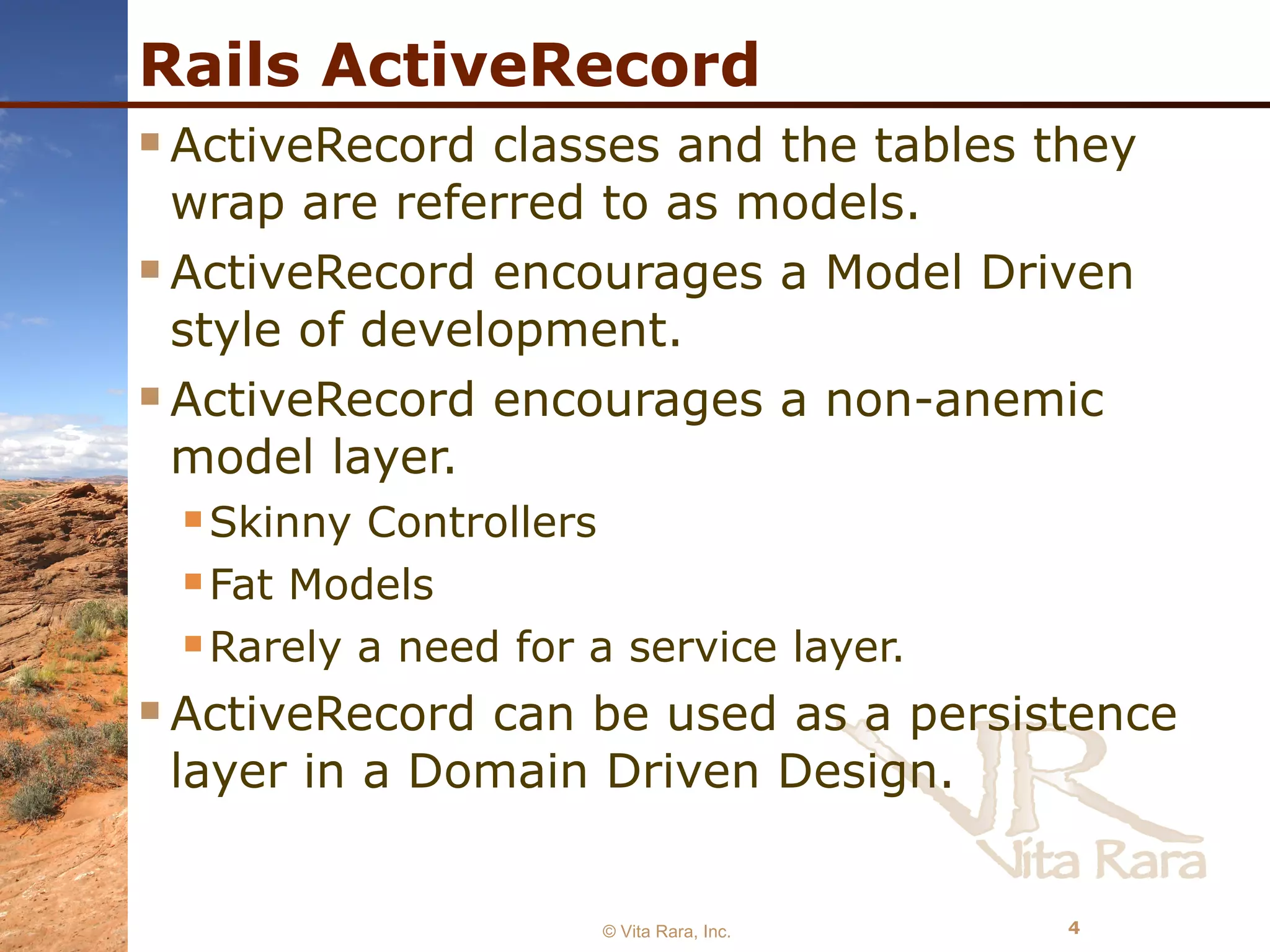
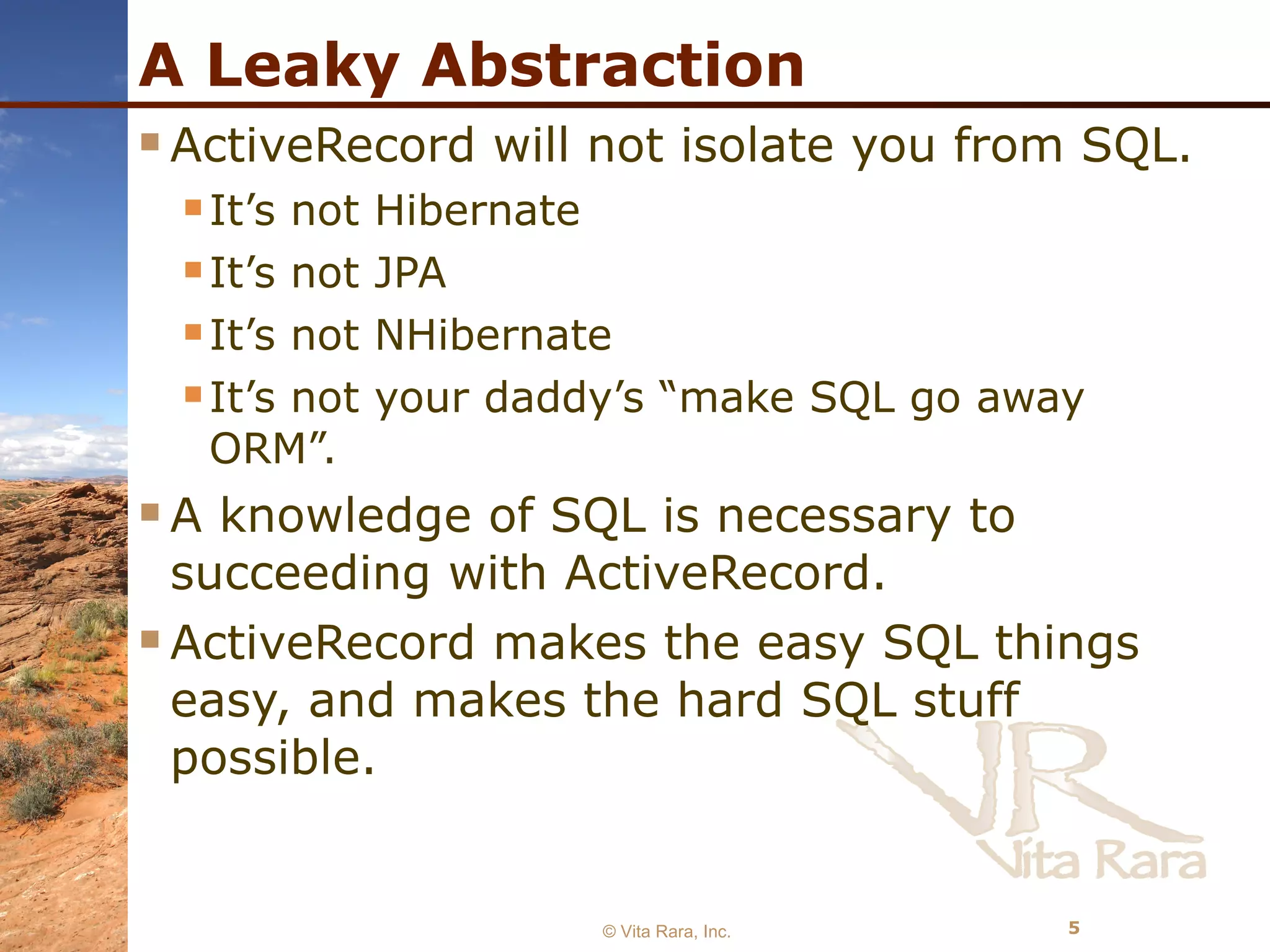

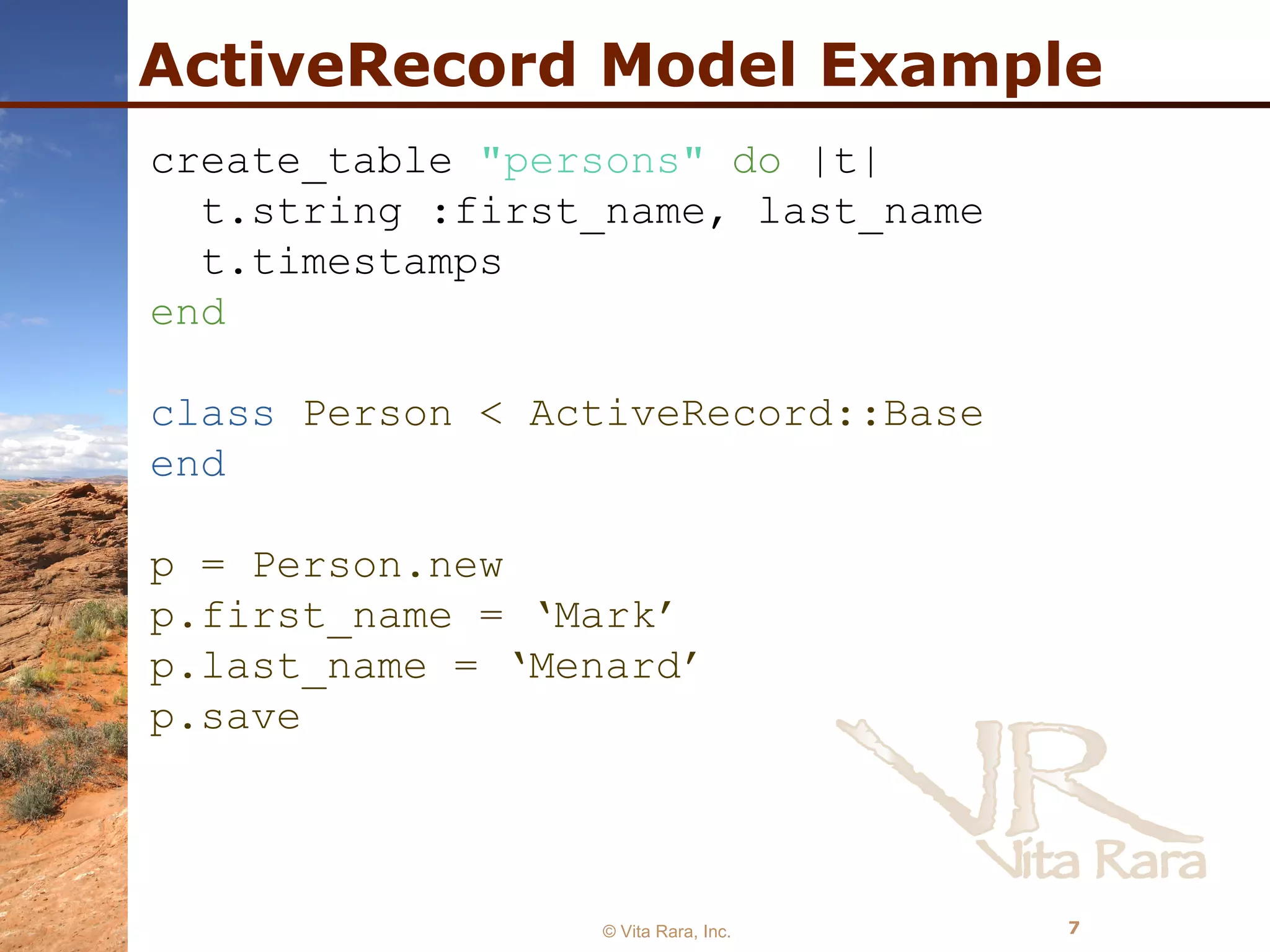


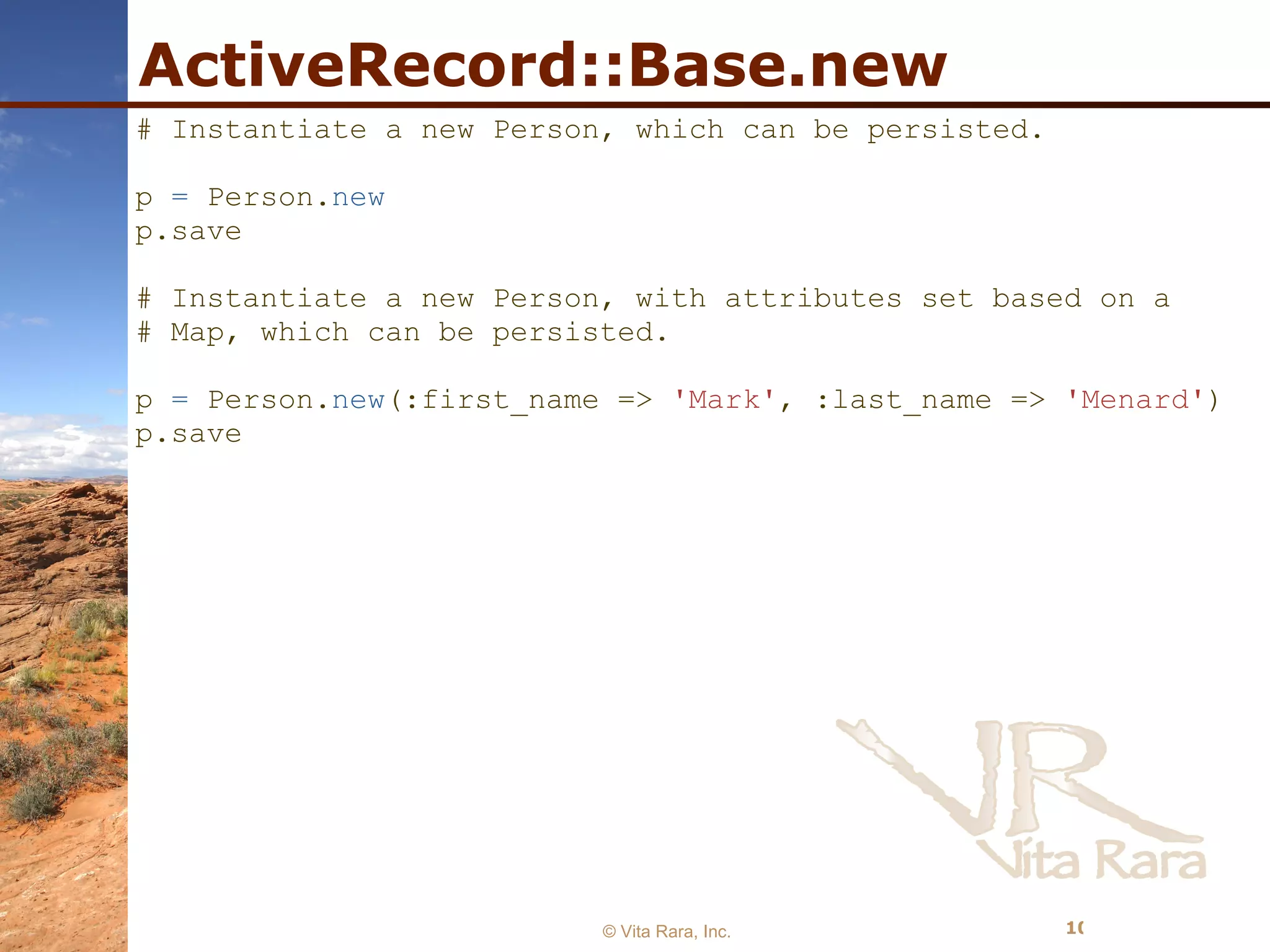


![Advanced Finding Because ActiveRecord is a leaky abstraction it provides straight forward ways to access SQL in its finders © Vita Rara, Inc. User.find(:all, :conditions => [ “login = ? AND password = ?” , login, password], :limit => 10 , :offset => 10 , :order => 'login' , :joins => 'accounts on user.account_id = accounts.id' )](https://image.slidesharecdn.com/introtoactiverecord-100416134342-phpapp02/75/Intro-to-Rails-ActiveRecord-13-2048.jpg)
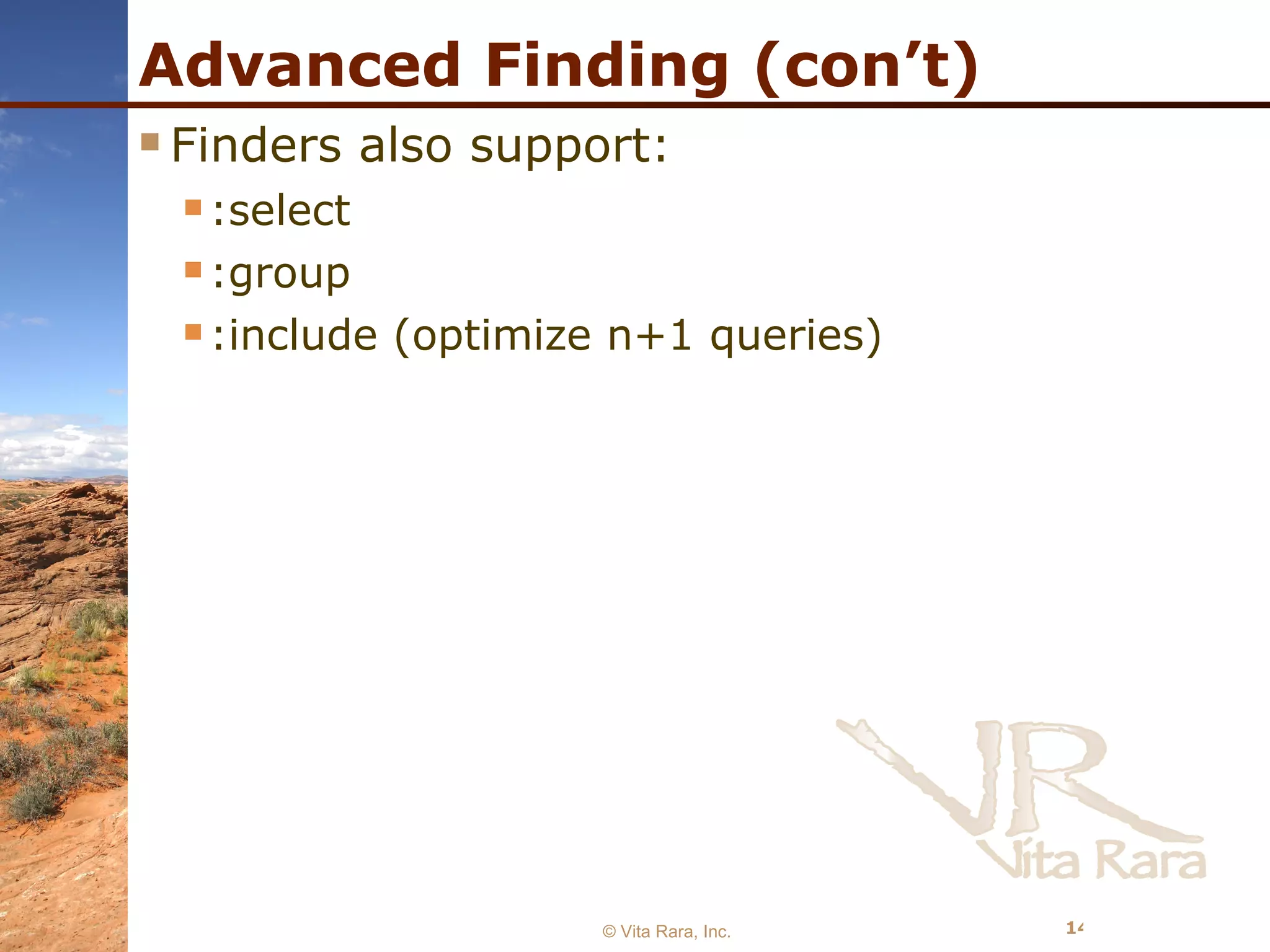
![Eager Loading: Avoid N+1 Issue © Vita Rara, Inc. <% # Don't put code like this in your view. This is for illustration only! # Find and display order summary of all pending orders for an account. orders = Order.find_pending_by_account(current_account) %> <% orders.each do |order| -%> <%= render :partial => 'order_header' %> <!-- This fires off a query for each order! BAD BAD BAD --> <% order.line_items.each do |line_item| -%> <%= render :partial => 'line_item' %> <% end -%> <% end -%> <% # Better would be orders = Order.find_pending_by_account(current_account, :include => [ :line_items ]) %>](https://image.slidesharecdn.com/introtoactiverecord-100416134342-phpapp02/75/Intro-to-Rails-ActiveRecord-15-2048.jpg)



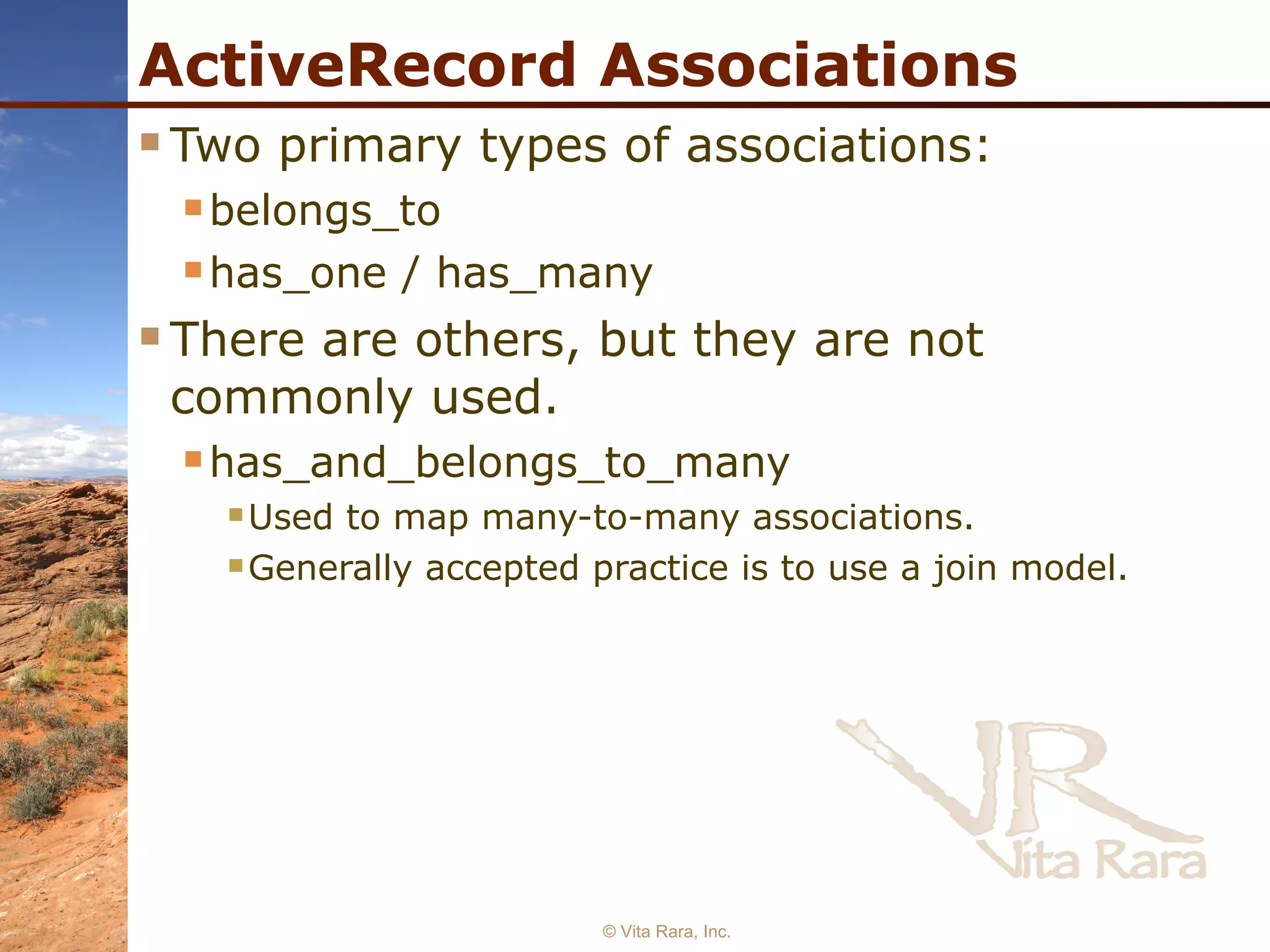

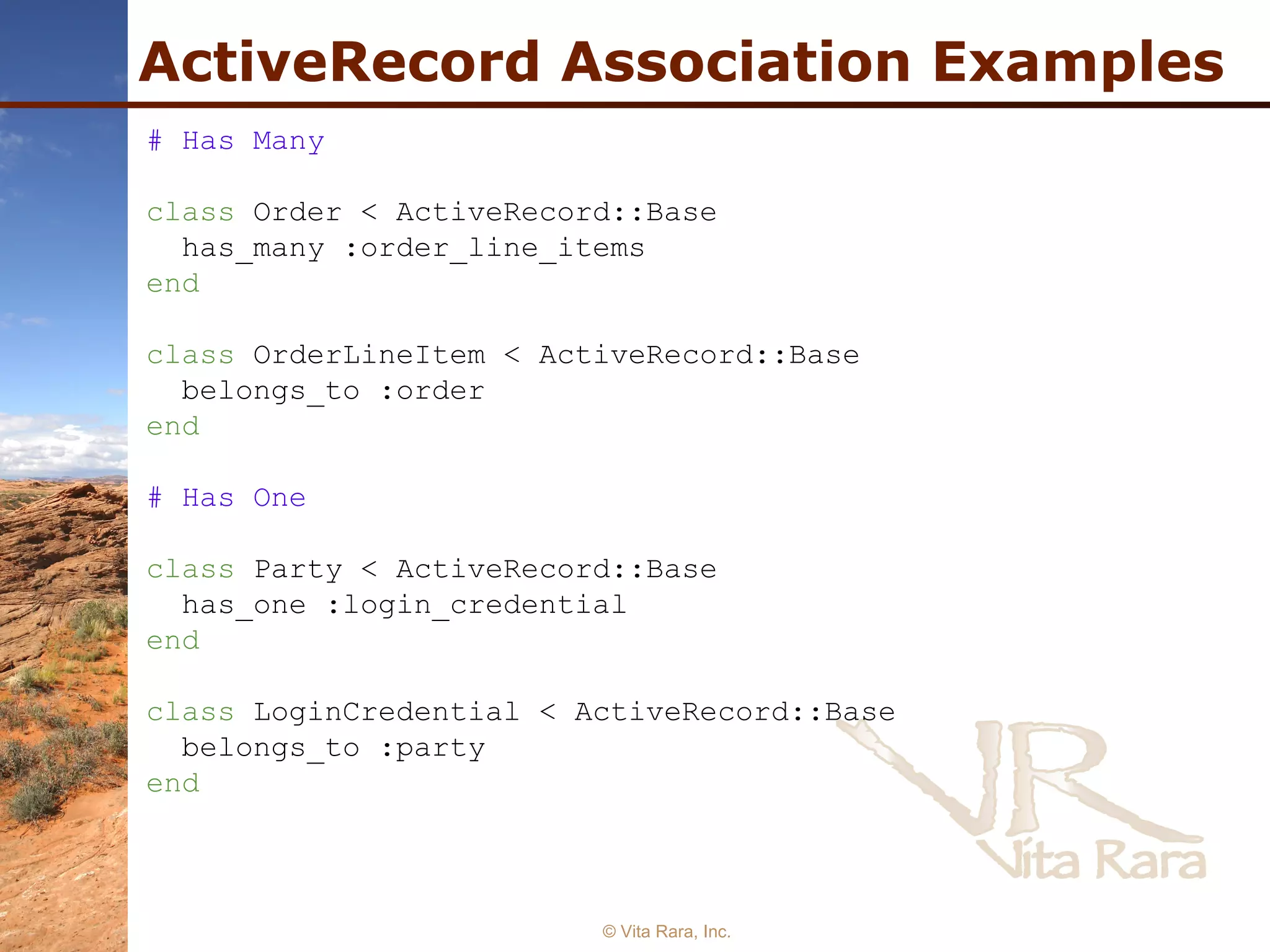

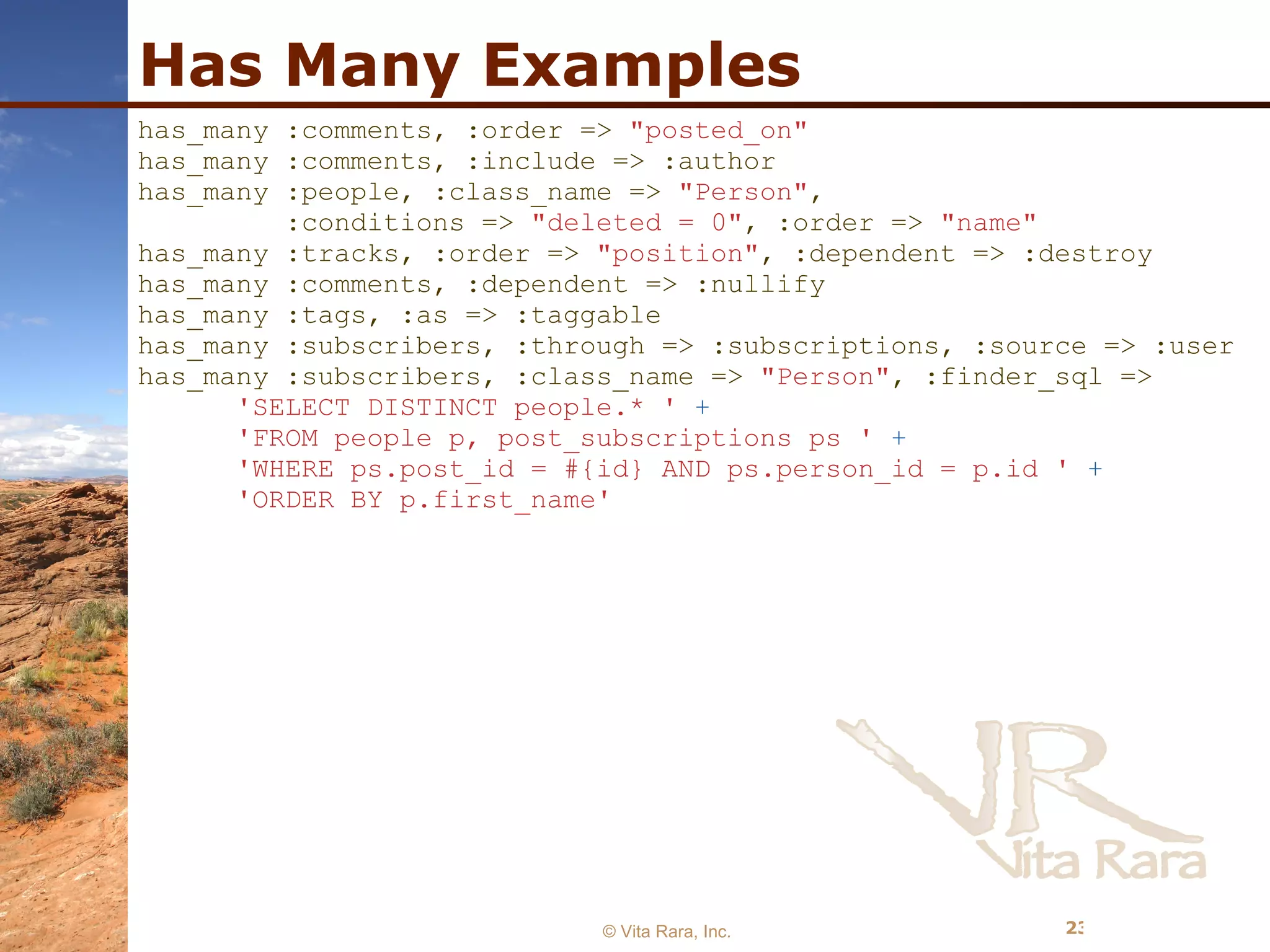

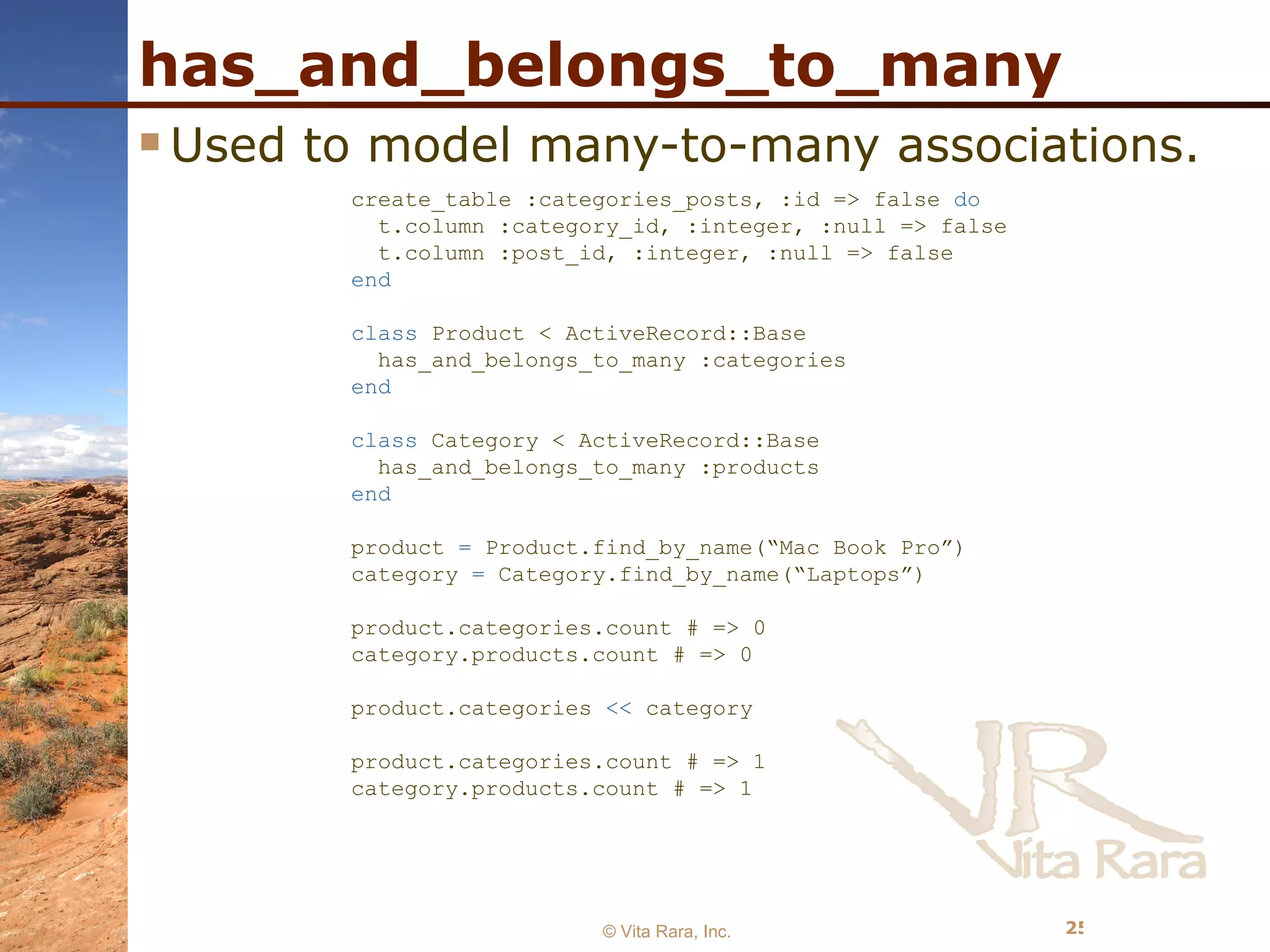
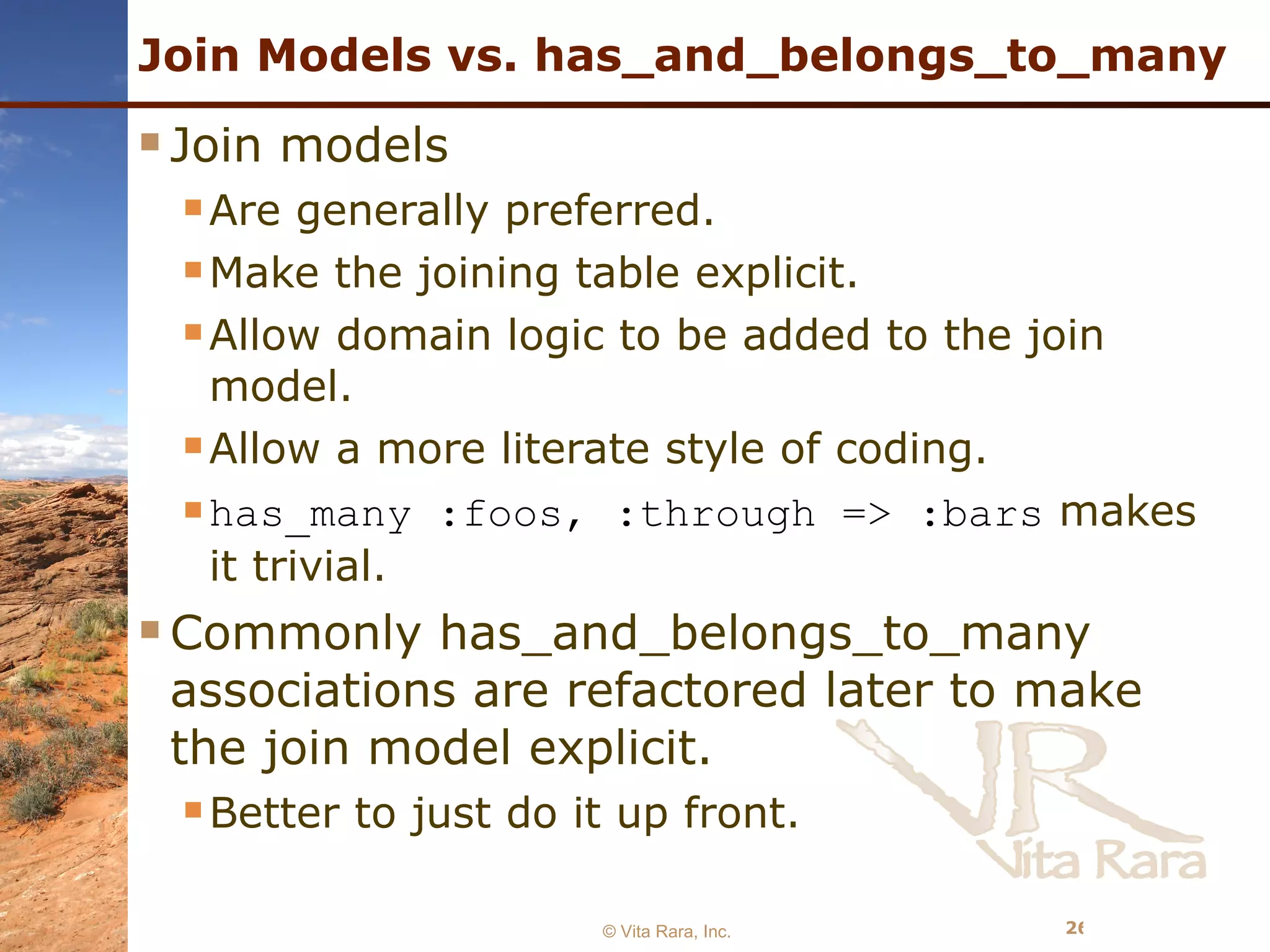

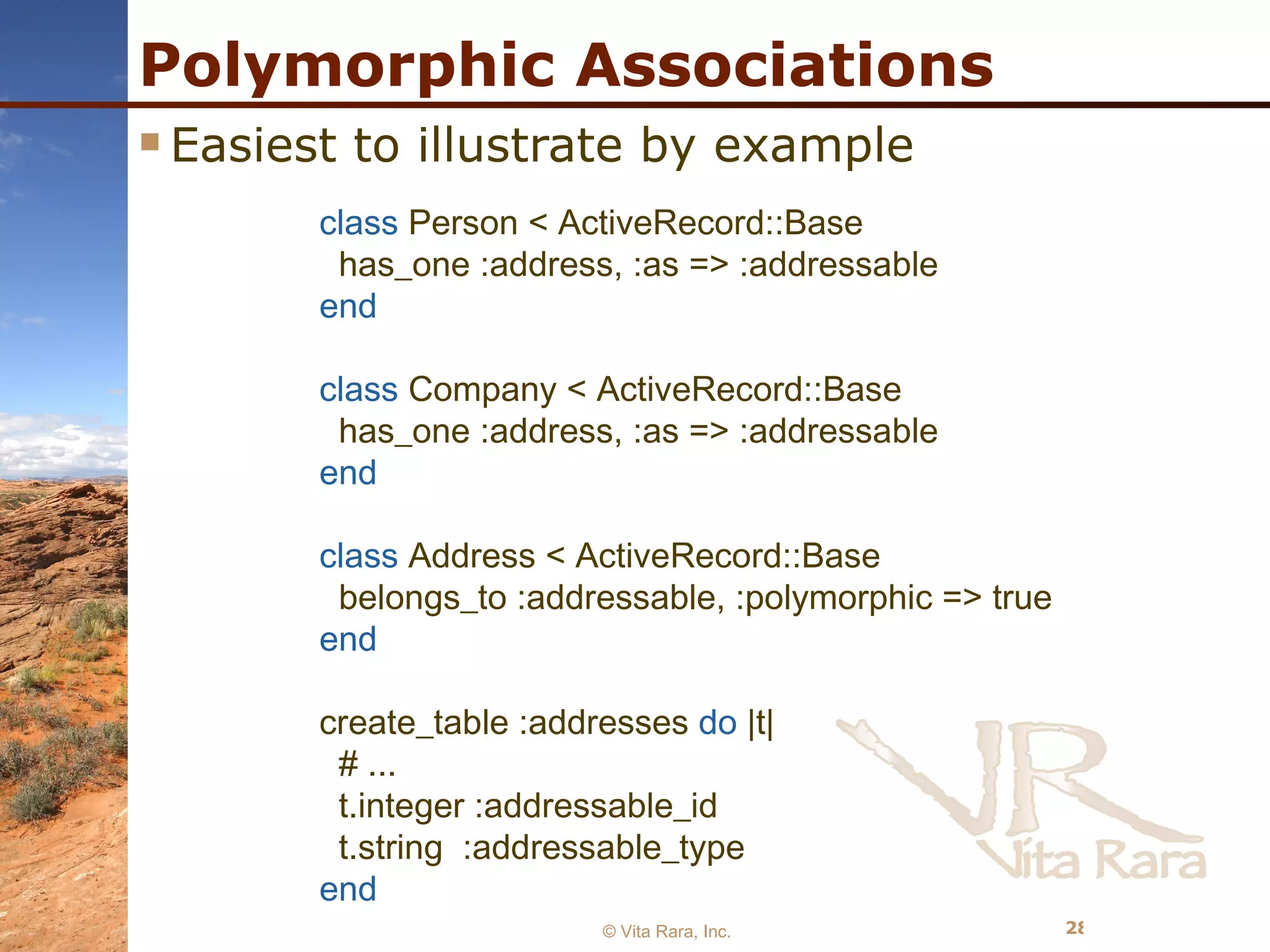


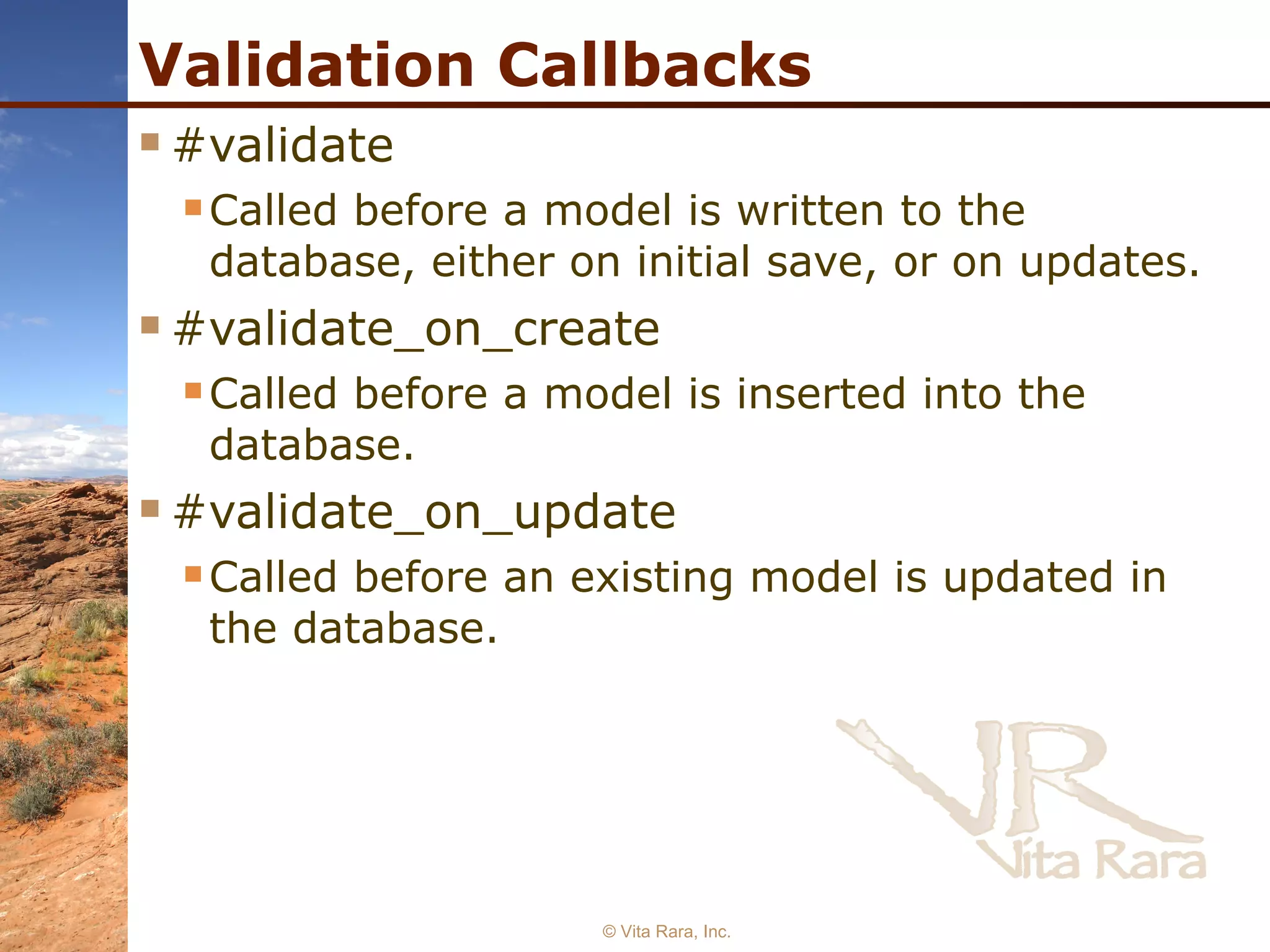

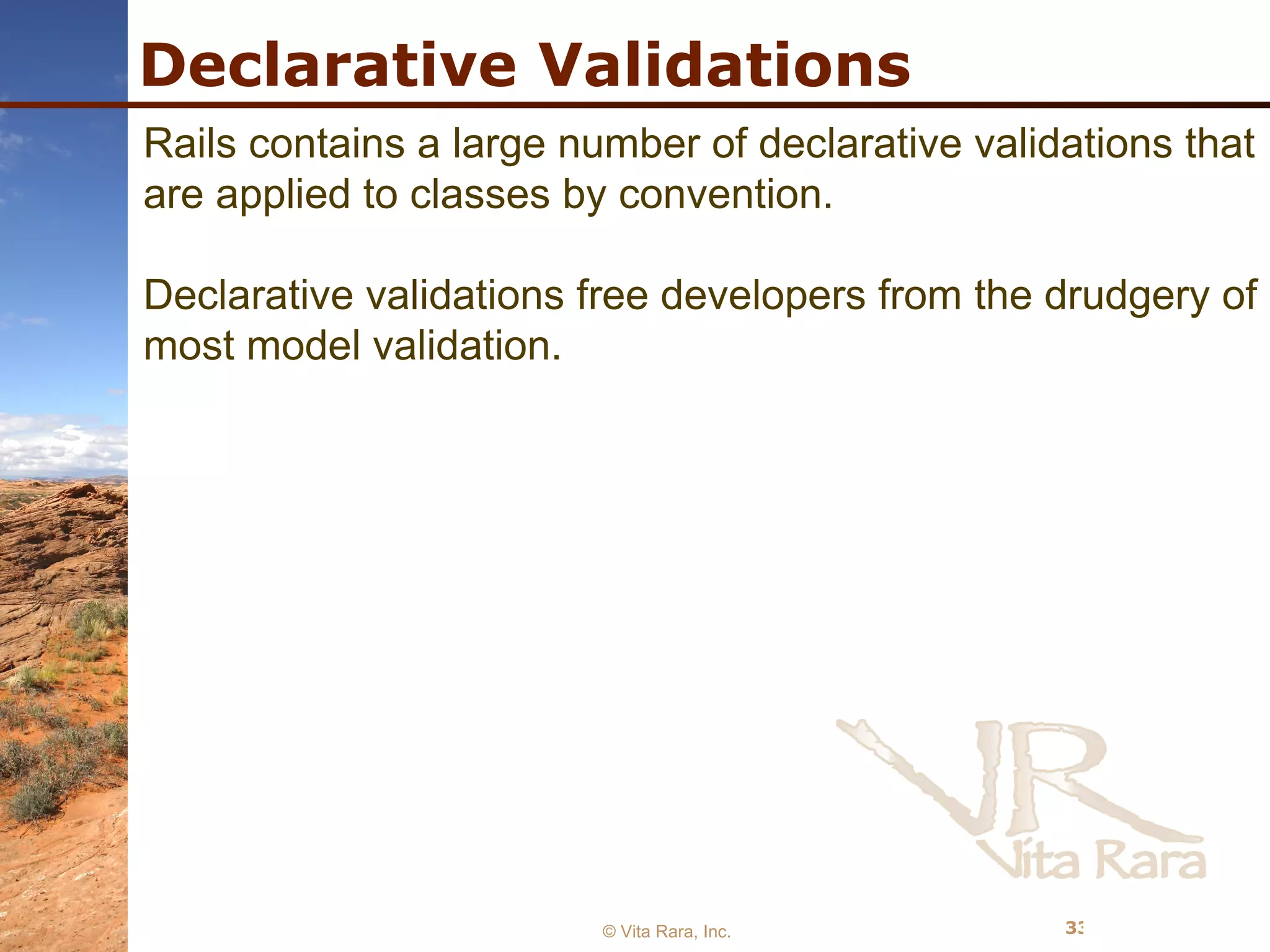
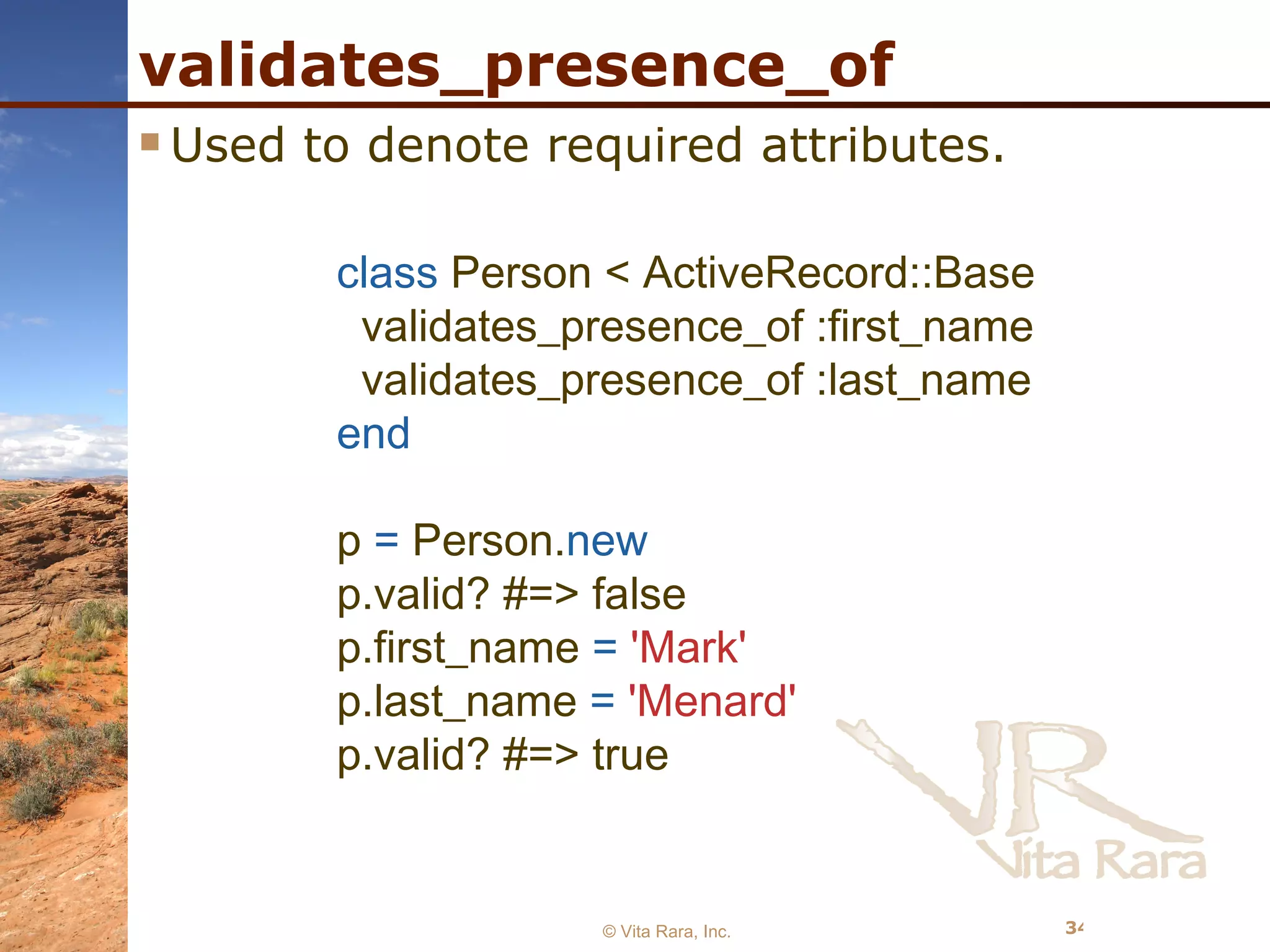
![validates_uniqueness_of Ensures that the value of an attribute is unique in the database. Can be constrained to work subsets of the data. © Vita Rara, Inc. class User < ActiveRecord::Base belongs_to :account validates_uniqueness_of :login, :scope => [ :account ] end account = Account.find(1) user_1 = account.users.create(:login => 'mark' ) user_2 = account.users.create!(:login => 'mark' ) #=> Throws InvalidRecord exceptoion](https://image.slidesharecdn.com/introtoactiverecord-100416134342-phpapp02/75/Intro-to-Rails-ActiveRecord-35-2048.jpg)

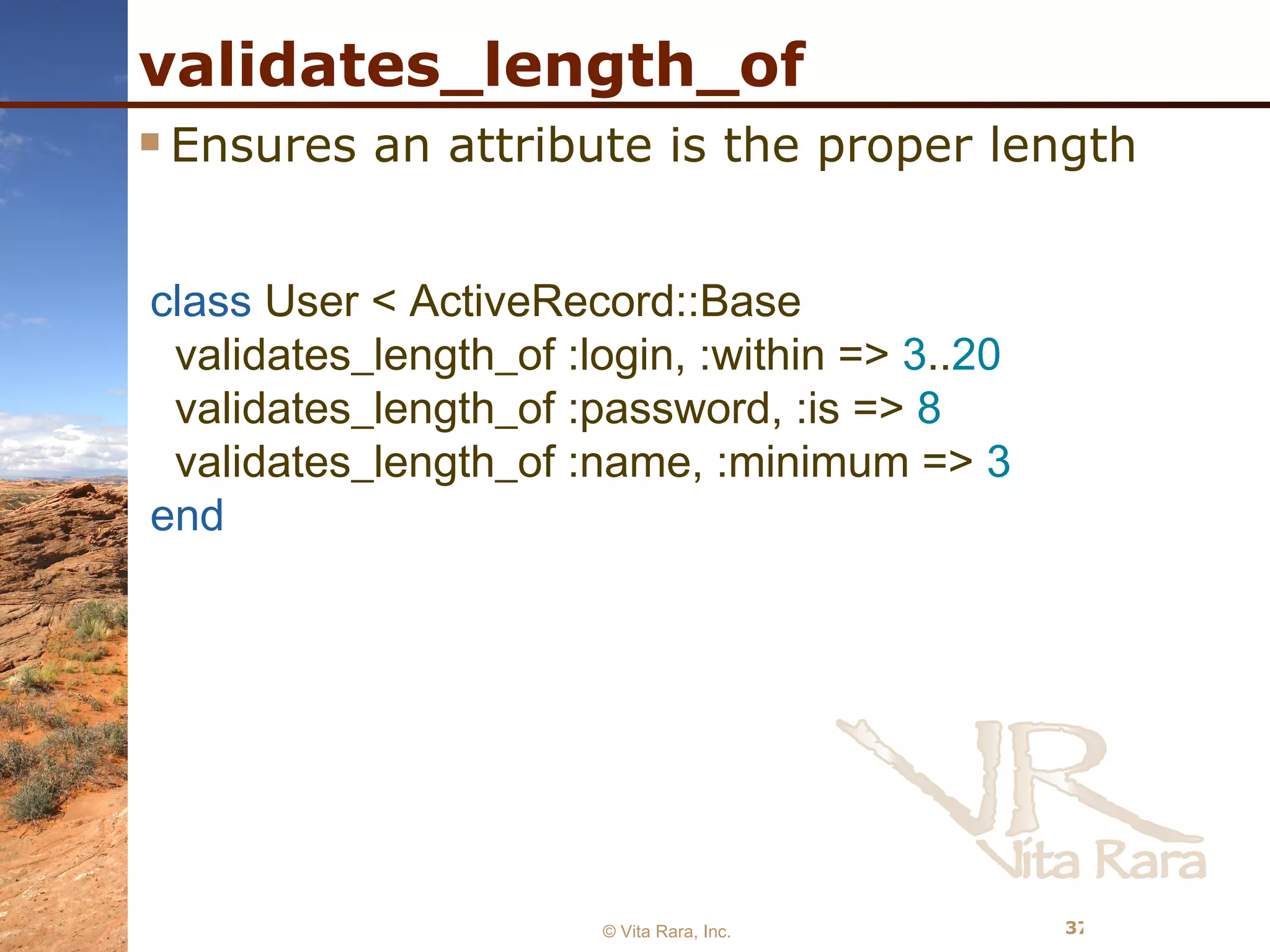
![validates_format_of Ensures the format of an attribute matches regular expression. Can be used to validate email addresses. © Vita Rara, Inc. class User < ActiveRecord::Base validates_format_of :email, :with => /^[\w\d]+$/ end](https://image.slidesharecdn.com/introtoactiverecord-100416134342-phpapp02/75/Intro-to-Rails-ActiveRecord-38-2048.jpg)
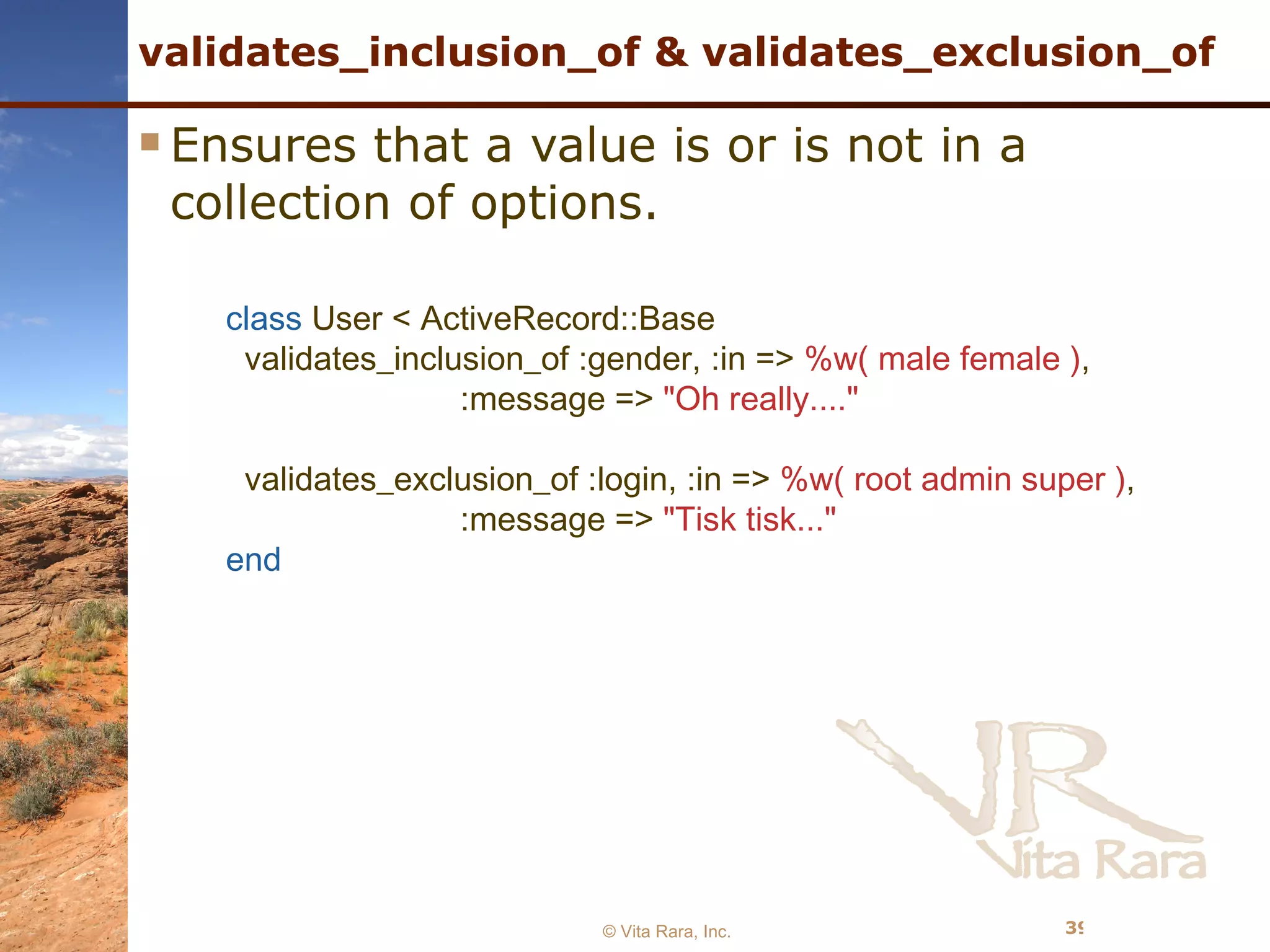
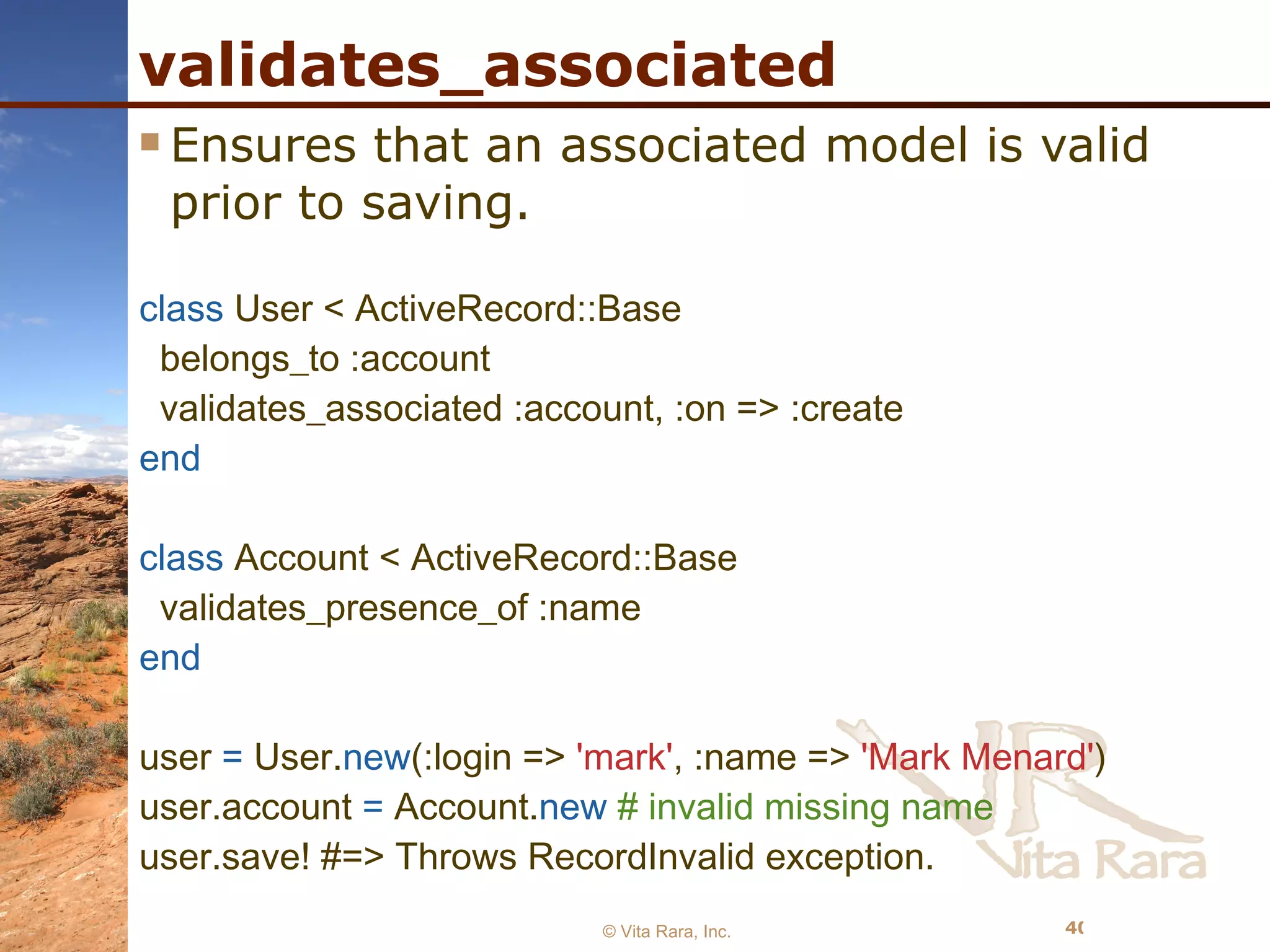

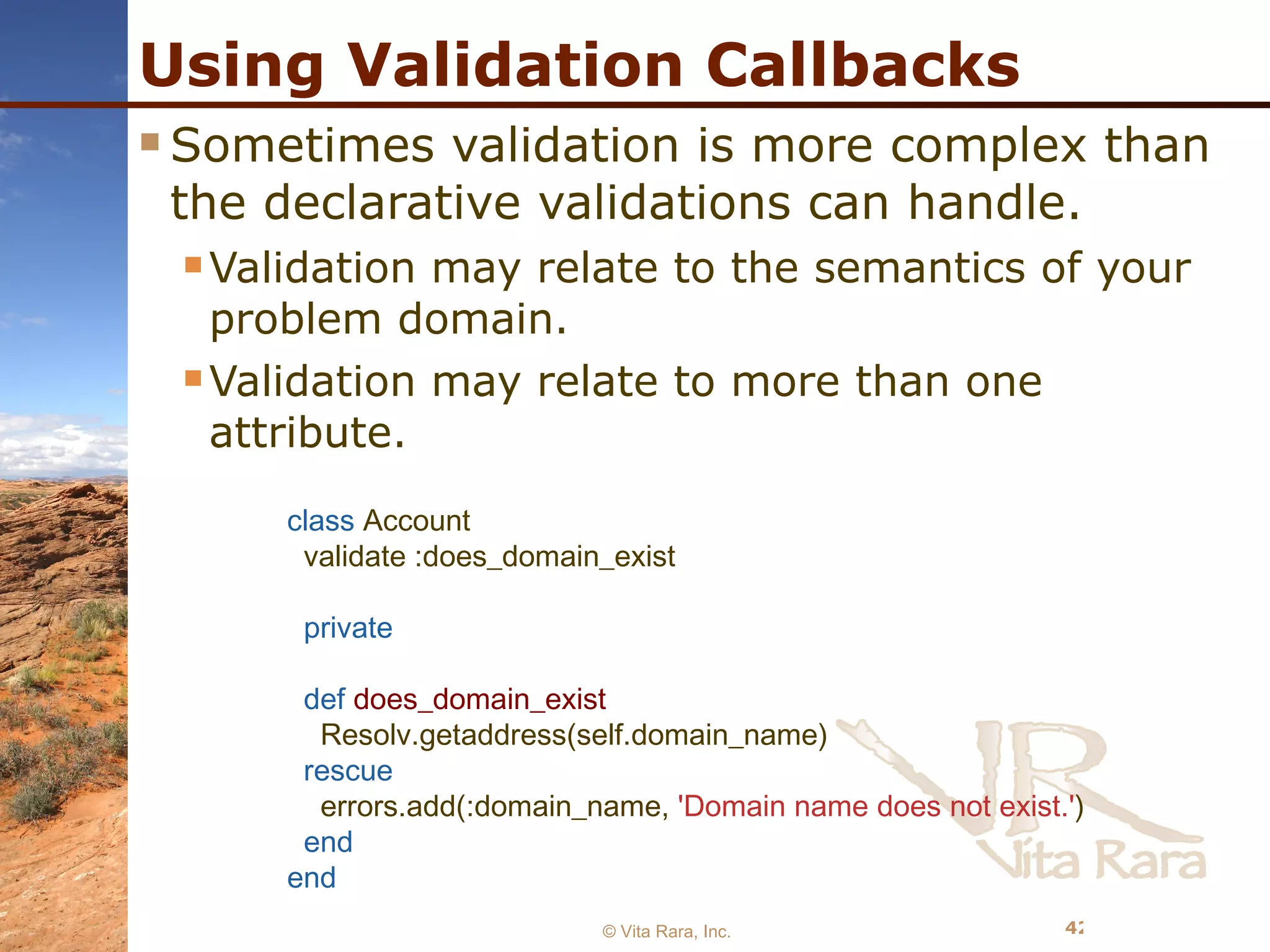
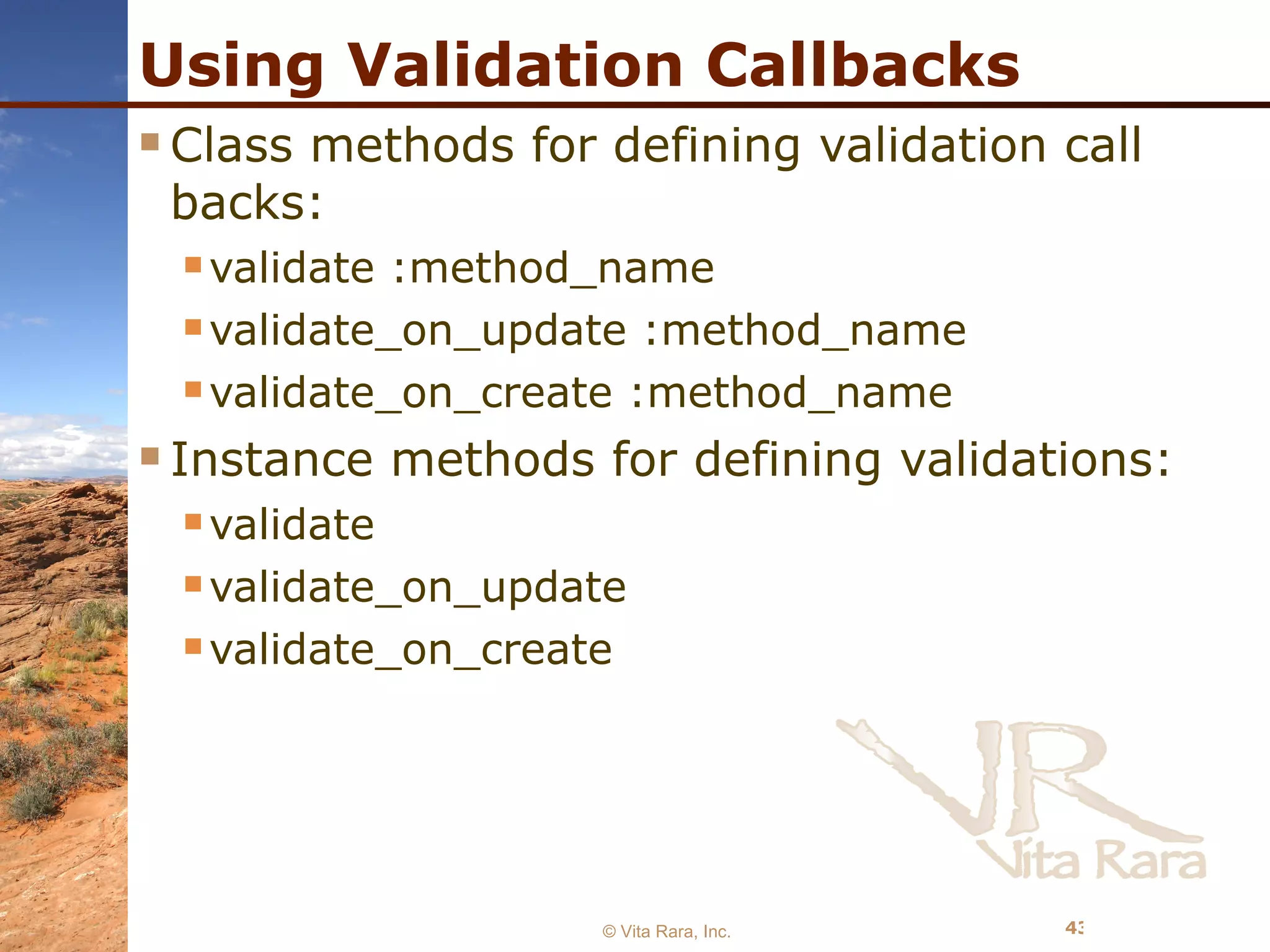

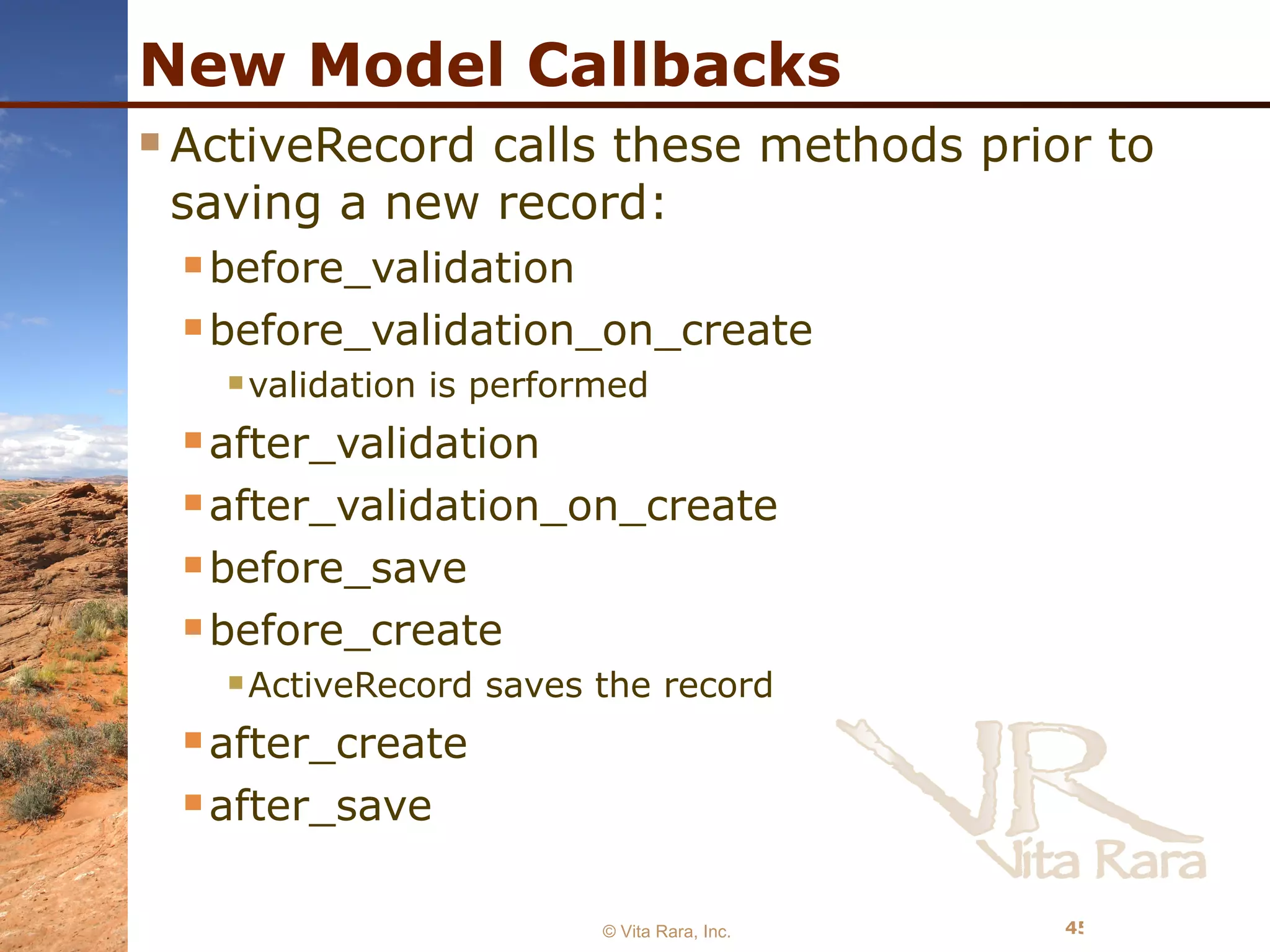
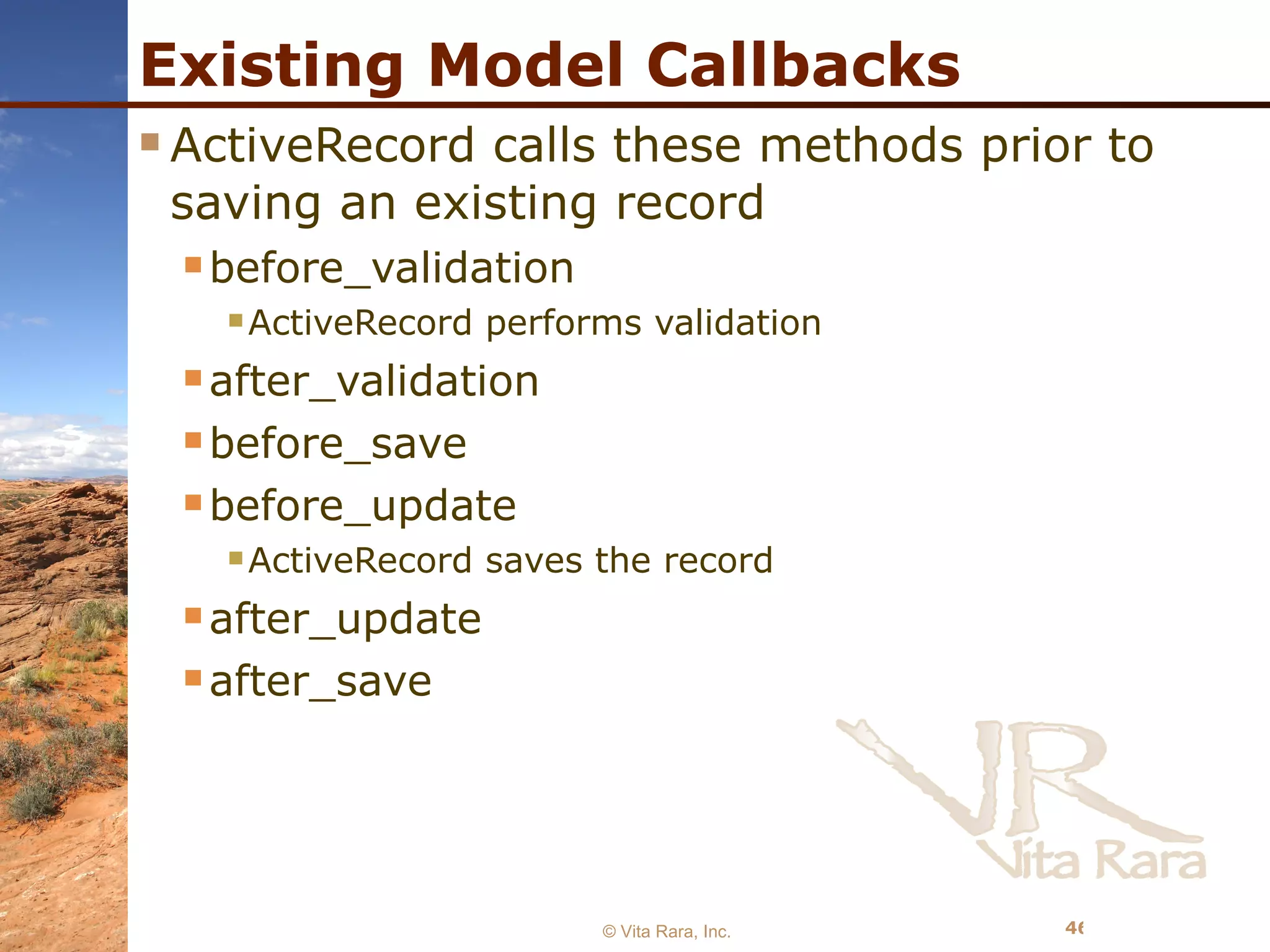
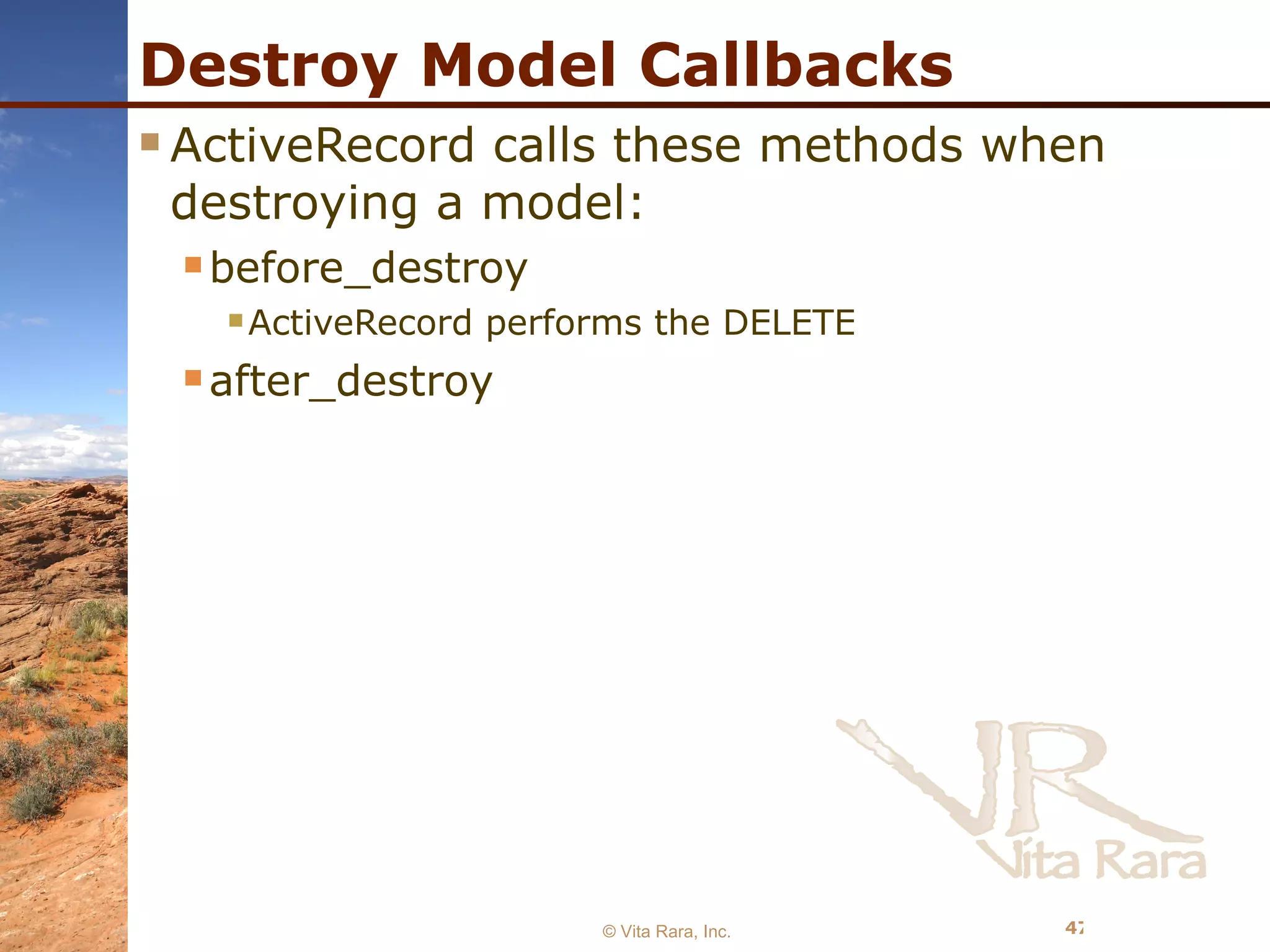

![Cleaning up Attributes Prior to Saving © Vita Rara, Inc. class CreditCard before_validation :cleanup_number private def cleanup_number self.number = number.gsub( /[^0-9]/ , "" ) true # I like to be explicit end end](https://image.slidesharecdn.com/introtoactiverecord-100416134342-phpapp02/75/Intro-to-Rails-ActiveRecord-49-2048.jpg)

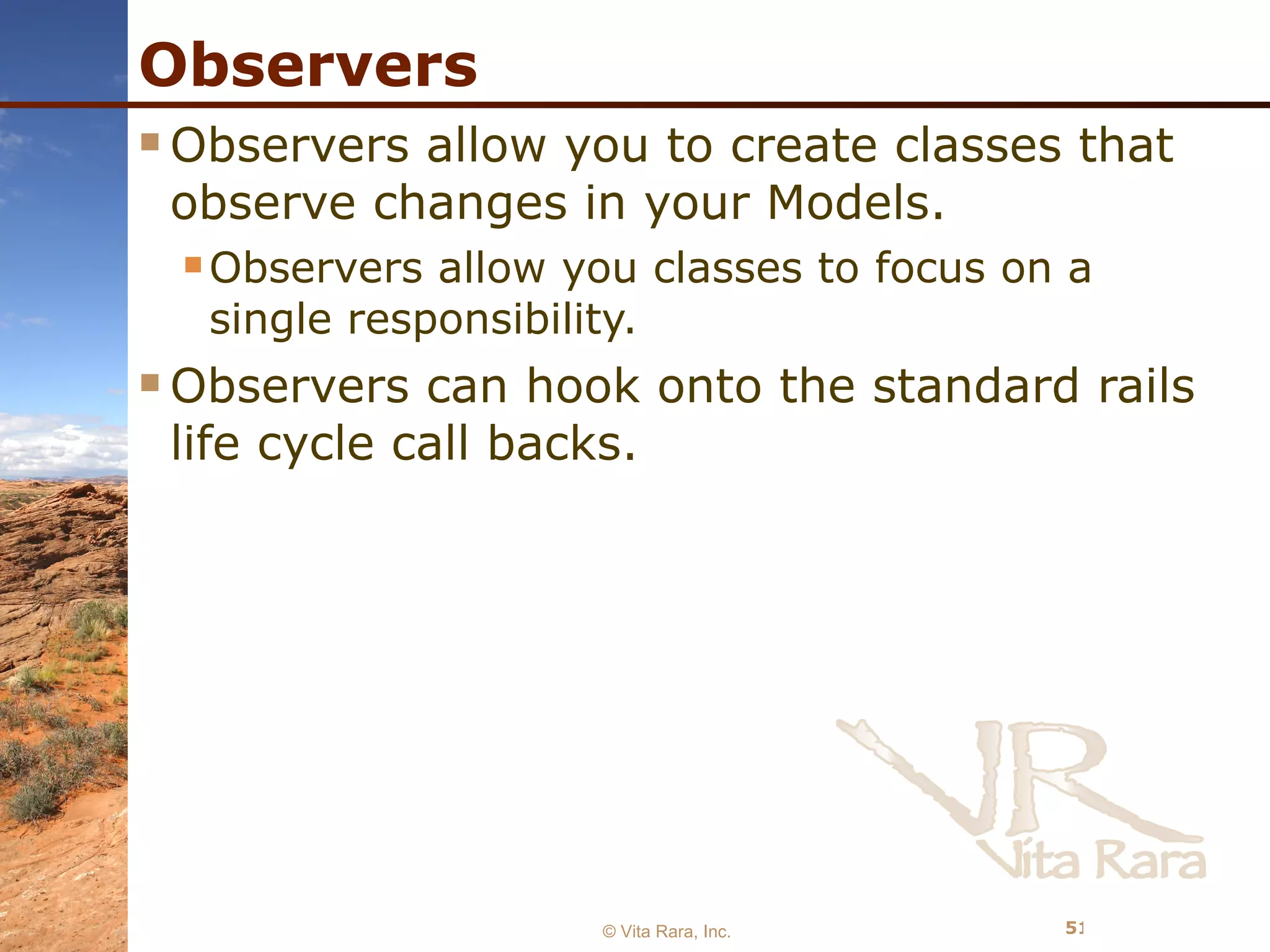
![Creating an Audit Trail with an Observer © Vita Rara, Inc. # in config/environment.rb config.active_record_observers = [ :auditor ] # in auditor.rb class Auditor < ActiveRecord::Observer observe User def after_create (model) log_info( "New #{model.class.name} created." , model) end def after_update (model) log_info( "Update #{model.class.name}" , model) end def after_destroy (model) log_info( "Destroy #{model.class.name}" , model) end private def log_info (model, info) log.info(info) log.info(model.inspect) end end](https://image.slidesharecdn.com/introtoactiverecord-100416134342-phpapp02/75/Intro-to-Rails-ActiveRecord-52-2048.jpg)

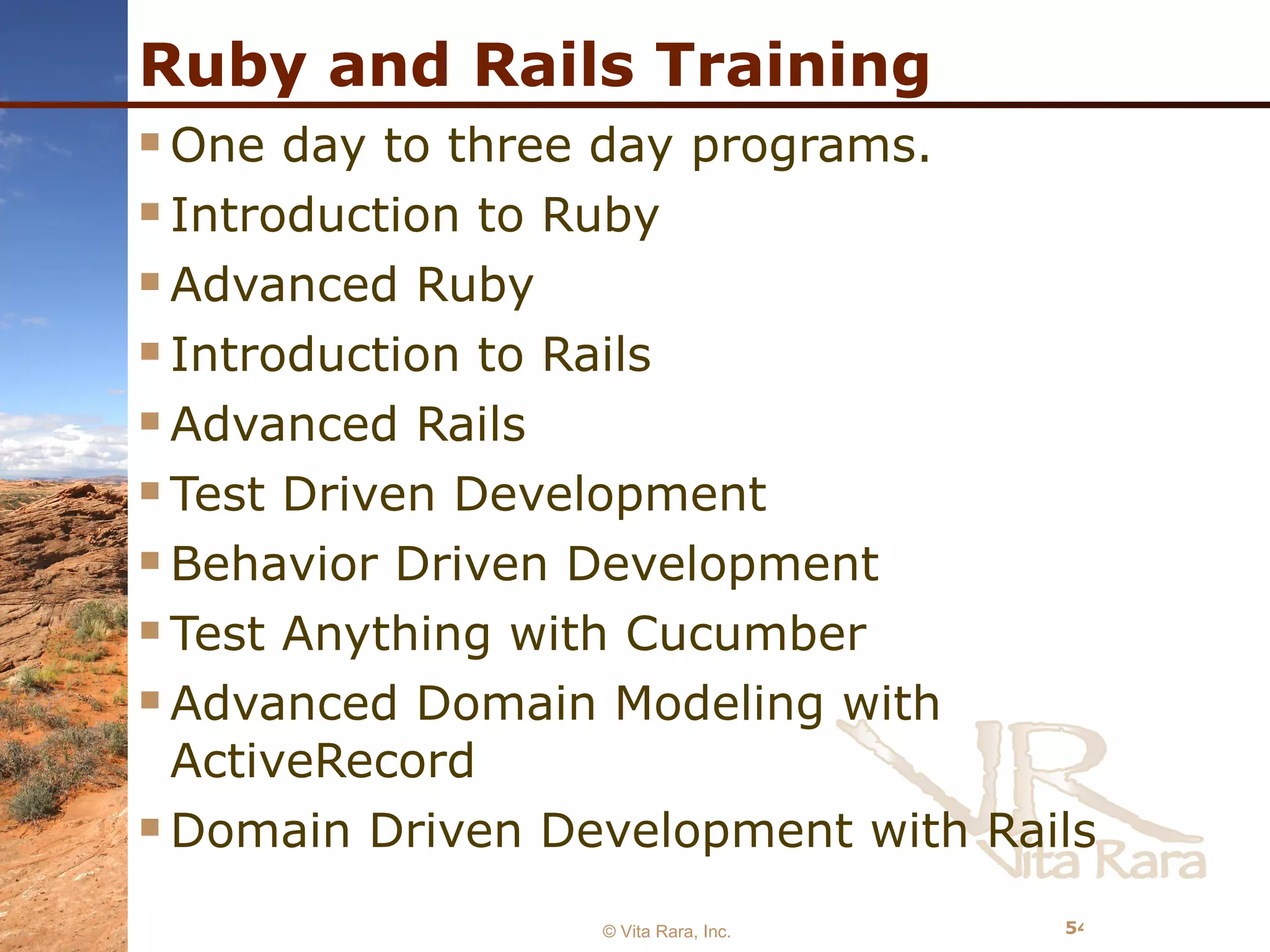
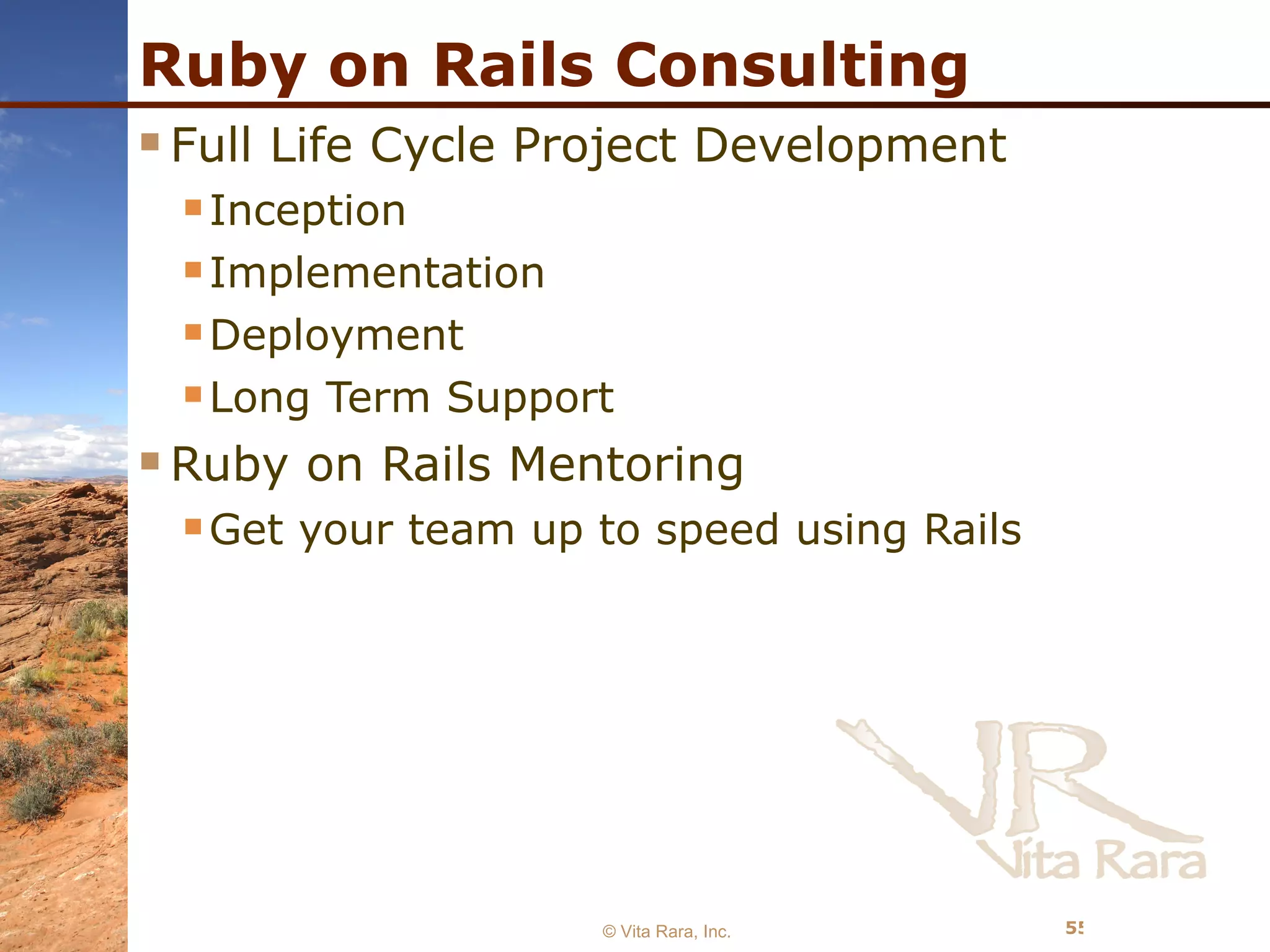
![Contact Information Mark Menard [email_address] http://www.vitarara.net / 518 369 7356 © Vita Rara, Inc.](https://image.slidesharecdn.com/introtoactiverecord-100416134342-phpapp02/75/Intro-to-Rails-ActiveRecord-56-2048.jpg)